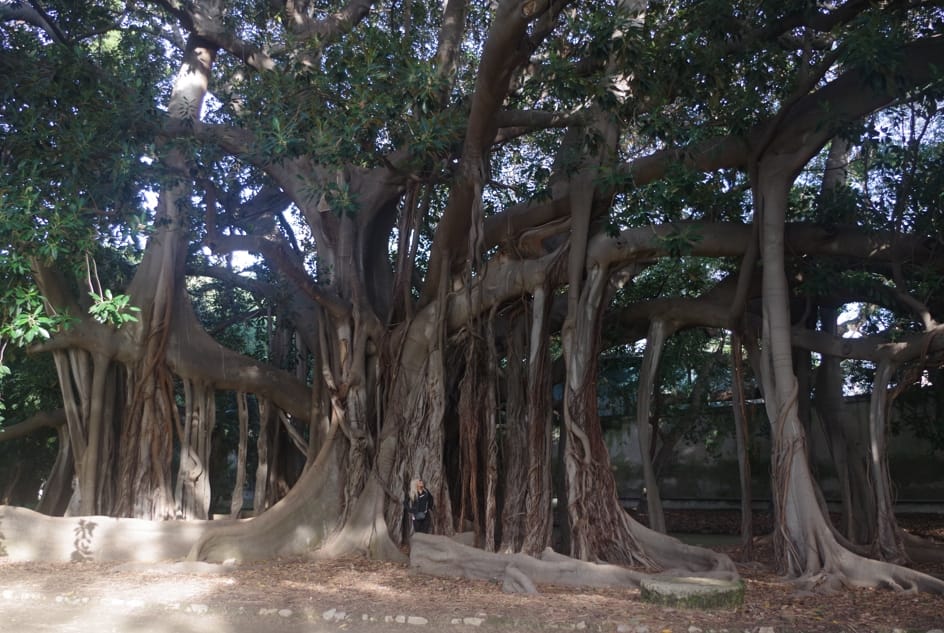
The Great Ficus in the Botanical Garden of Palermo is a truly extraordinary plant from various perspectives, including its history, biology, culture, and size. It is the oldest known Ficus Macrophylla in Italy, having been planted by Vincenzo Tineo in 1845, making it 173 years old.
At present, it is the second largest ficus in Italy, with a crown that covers an area of approximately 1,200 square meters on the ground. The largest ficus in Italy can be found in Piazza Marina in the Garibaldi Gardens and was planted in 1863. It has a volume of 10,000 cubic meters of vegetation, a height of 25 meters, and a trunk girth of 40 meters.
The Great Ficus is native to the Australian states of Queensland and New South Wales and is the ancestor of the large ficuses found in gardens in Palermo, Sicily, and southern Italy.
It has a polycaule structure, meaning it has multiple stems, and has a central body that is shaped like a radial symphysis, which is formed by the fusion of corms and aerial roots. The overall shape of the plant is sinuous and radial. The tree grows in all directions, with its central body extending vertically and laterally through higher order ramifications, and downward through columnar aerial roots that support the branches. It also grows on the ground surface through tabular roots.
In particular, this specimen in the Botanical Garden of Palermo has 44 stems, the largest of which have a circumference of around 3.60 meters, and supports the growth of eleven large main branches that have a mostly horizontal development. These main branches then give rise to lower order branches.
